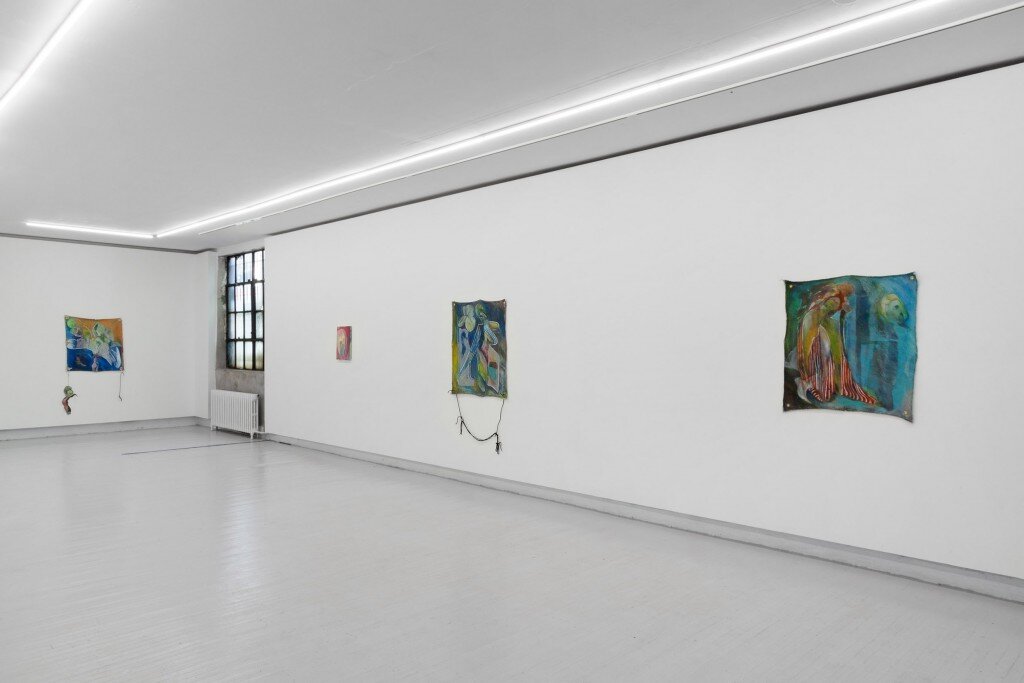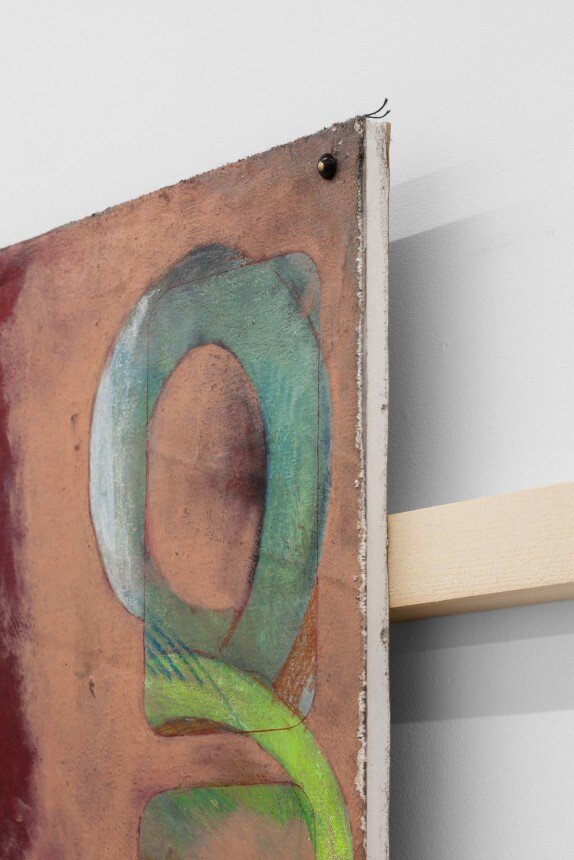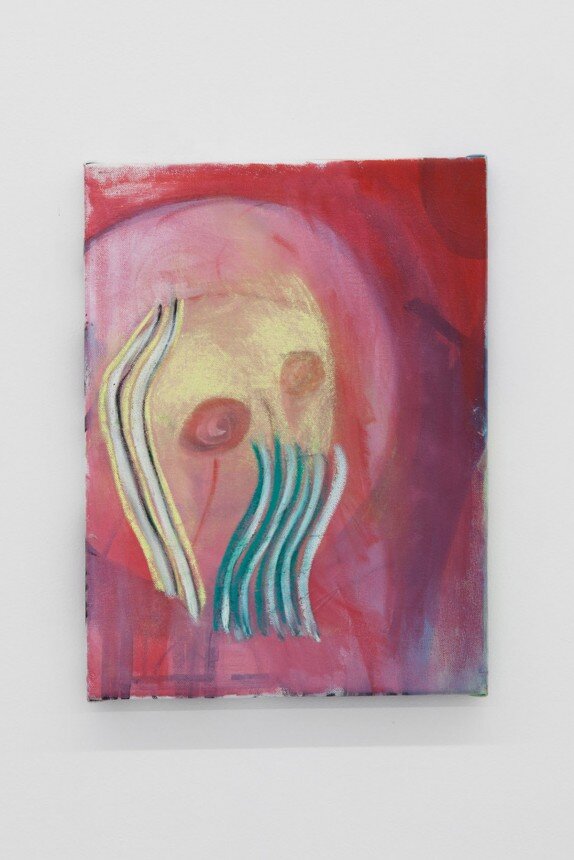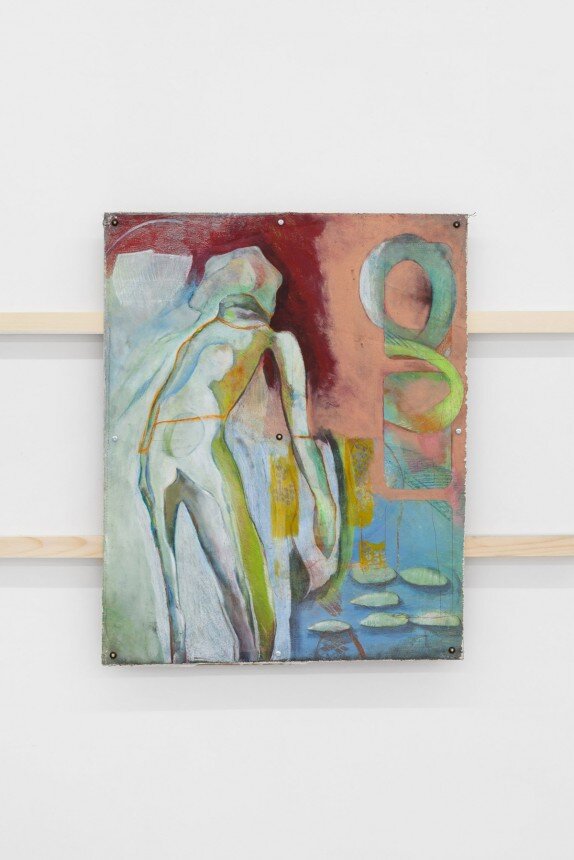Katie Lyle
An Ear in a Pond
May 25–June 16
Opening: Friday, May 25th 6–8pm
ESP is pleased to present Katie Lyle's solo exhibition: An Ear in a Pond.
~
An Eye and the Grid
The origin of painting’s most immovable myth begins at the concave centre of a warped grid. In the early part of the 15th century, a painter looked out onto a great measure of land and saw the sun pulsing on the horizon. He named it God. He then turned toward that which he had named God and in doing so the cloth of his canvas became like glass in his hands. Humbled and awed, he recorded what he saw, projected as it was on the transparent surface. The fields, the clouds, the sheep and cattle all led like an arrow toward the centre of God, a blinding glint on a faraway hill.
Four hundred years later, after God had been declared dead, soot and sand stuck to the panels painted in oil and we saw that they were cloth. The distant centre where God was drawn rejoined its surface as pond water would after a skipping stone has sunk; a wrinkle then a wink. When the surface stilled everything came closer to touch. There was the weave, the textured weft and warp. We lined up to stand in front of canvases finely penciled with long horizontal lines intersected at even intervals with long vertical lines – projected as though seen from no vantage at all. Our gazes grazed and skipped along the surfaces without sinking. Our twill woven blouses brushed against their like surfaces. Speechlessly we interfaced with our material world, the very skin of things, our eyelashes caressing the flesh of the canvases.
An Ear in a Pond
Working in the mode of contemporary figurative painting, Katie Lyle’s work inherits a history of surfaces and methods of representation. The Modernist turn in painting meant that the logic of vision, once linear and perspectivally inward, became infected by the tactile, graphic and outward. [1] Painting became both surface and structure and could be read two ways:
The optical – the container for images, heir to linear perspective and mimetic forms, surface of myths and narratives.
|
The Pond
The tactile – the perceptible structure, sensuous, the non-representation, the presentational thing of it, observable.
|
The Ear
Lyle’s exhibition takes its name from Eva Hesse’s work An Ear in a Pond (1965), among her first to directly combine painting and sculpture. In it, a red cotton coil emerges from the right bottom half of painted masonite board; an inversion of the myth of painting, the surface expels its vanishing point – it reaches out towards us. The paintings in Lyle’s show follow a similar, inverted visuality. Such works emerge from the flatness of the grid and reach out to touch, to move, to grab, to feel.
Lyle’s earlier works show direct experimentation with sculptural vocabulary – piercings in memory foam, layered canvas cut-outs, drooping strings and sewing pins and bits of soldering – while her newest works delve into the sculptural surface of image-making. Waxy pigments of ballpoint-blue, algae greens and warm, dusty yellows draw forward half figurations and notations of visually familiar terms – shapes, feelings, faces – while denying their absolute fulfilment. These gestures invoke a third surface of painting, a vision that has been called haptic, an art historical term that stands for a kind of vision that ‘grabs’ the thing it looks at. [2] The haptic is the interior-felt interplay of optic and tactile, where texture is read onto a surface and felt like touch, sensory and kinetic. In this visual-spatial sense making, Lyle’s sculpted shapes and figures are completed by the viewer. Looking at Lyle’s paintings, her serpentine figures convert to texture; vision becomes incarnated. We feel as if we are skimming the surface of a murky pond, its surface rushes to replace itself.
— Elora Crawford
Endnotes
[1] Rosalind E. Krauss, “Agnes Martin: The /cloud/,” in Bachelors: October, (Cambridge, Mass.: MIT Press, 1999): 89.
[2] Alois Riegl, as quoted in Olin, Margaret, Forms of Representation in Alois Riegl’s Theory of Art (University Park, PA: Penn State University Press, 1992).
Elora Crawford is a writer living in Toronto. Her work has appeared in C Magazine and The Trinity Review. Her chapbook Towards a History of Knots, published by LOIS Projects, is forthcoming Summer 2018.
Katie Lyle is an artist who works in painting, drawing and performance. Selected exhibitions include: 67 Steps, Los Angeles (2018); Daniel Faria Gallery, Toronto; The Loon, Toronto (both 2017); G Gallery, Toronto; Evans Contemporary, Peterborough (both 2016); Erin Stump Projects, Toronto and Model Project Space, Vancouver (both 2015). Lyle lives and works in Toronto.
The artist wishes to gratefully acknowledge the support of the Ontario Arts Council and the Toronto Arts Council.
More from Katie Lyle
